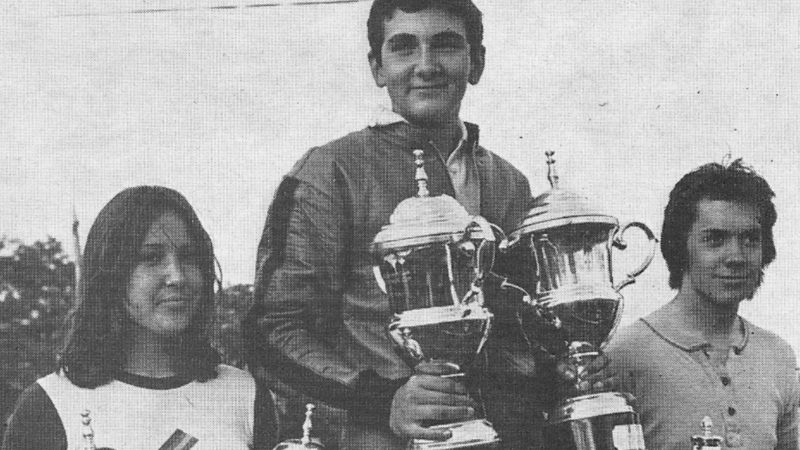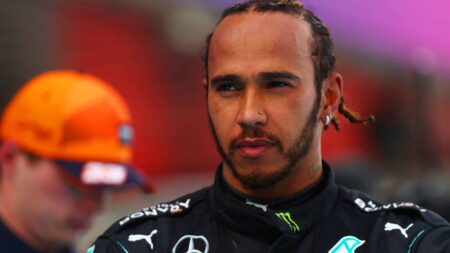Who knows how it may have panned out? A move to the potent Formula Atlantic class was certainly ambitious, missing out the traditional rungs of Formula Ford. But for a mega talent, possibly quite feasible. The British Atlantic series at that time was being fought out between Tony Brise and Gunnar Nilsson, the former already having made his F1 debut (with Graham Hill’s team) and causing something of a stir there, the latter set to have a sparkling F1 rookie season with Lotus in ’76.
A strong late-season debut, mixing in that company, from a gifted 17-year-old female racer, possibly as the reigning junior world karting champion (she was one of the hot favourites for the event when she suffered her accident during practice) would certainly have created the sort of buzz that might have propelled her to the big time.
The photograph above is the podium from the 1974 Junior World Championship final at Rye House where at 15 she has finished second to Felice Rovelli (world champion of ‘76 and 77, whose industrialist father founded a karting engine company to power him), with a 17-year-old Martin Leach (who would later go on to be boss of Ford Europe and who died of cancer in 2016). Elio de Angelis finished sixth, future FF1600 star Sean Walker 13th.
This was at a time when there seemed to be a real appetite to get women drivers into F1. Lella Lombardi had just finished sixth in the Spanish Grand Prix, Brands Hatch impresario John Webb was supporting both Davina Galica and Desiré Wilson and the latter in particular looked to have real potential. But the ideal would have been – and remains – a young, super-talent who was wiping the floor with the opposition. A female Senna.
All these years later the search continues and W Series is doing its part. Lorraine Peck showed in her brief time that it’s feasible. The appetite of the business side of F1 today for such a thing is immense. It’s just a case of waiting for the identity of the next Lorraine Peck to become apparent.


